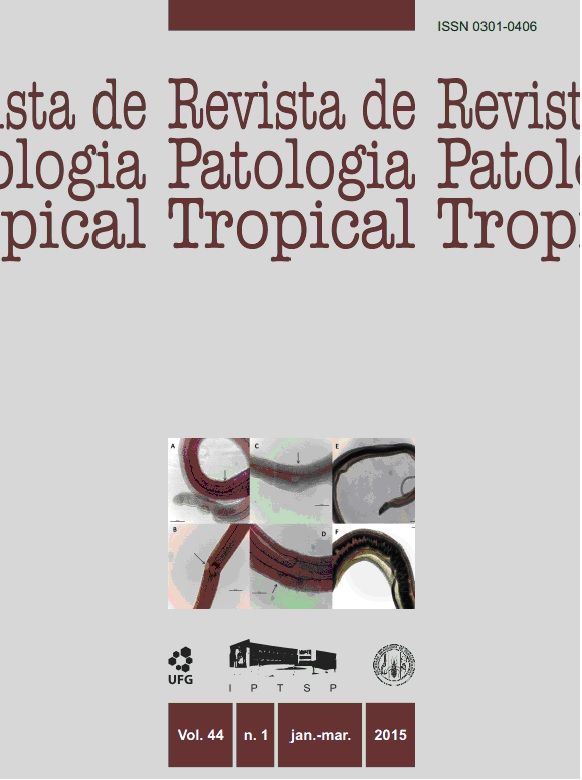ESTUDO DO COMPORTAMENTO DE OVIPOSIÇÃO DO AEDES AEGYPTI EM DOIS BAIRROS SOB A INFLUÊNCIA DO CLIMA SEMIÁRIDO NO MUNICÍPIO DE SALINAS
DOI:
https://doi.org/10.5216/rpt.v44i1.34817Palavras-chave:
Aede aegypti, clima, comportamento animal, oviposição.Resumo
O mosquito Aedes aegypti é o principal vetor de arborvírus humanos no Brasil. O comportamentode oviposição é importante para a sobrevivência e dispersão do A. aegypti. O objetivo deste trabalho foi avaliar estes comportamentos e sua relação com fatores climáticos. Instalaram-se vintearmadilhas ovitrampa em dois bairros de Salinas-MG. Todas foram inspecionadas semanalmentepara contagem e identificação dos ovos presentes na água e na palheta. Paralelamente, analisaram-sedados meteorológicos da região. Os resultados mostraram que o Índice de Positividade deOvitrampa (IPO) variou muito (0% a 90%) entre as semanas/bairros amostrados, o que demonstraa grande flutuabilidade populacional do vetor. Dentre os fatores climáticos analisados, o que maisintensamente influenciou a oviposição foi a precipitação, seguida da umidade relativa. O númerode ovos encontrados na palheta foi significativamente maior que na água (p<0,05). Entretanto,observou-se aumento significativo de ovos na água quando a umidade relativa esteve abaixo de 40%.Este parece ser um dado importante para a manutenção das populações em períodos de seca. O baixonúmero de ovos (<30) encontrados em 56% das armadilhas positivas demonstrou a ocorrência docomportamento de skip-oviposition que pareceu contribuir para a prevalência do mosquito em todoo período amostrado. Concluiu-se que a ocorrência de oviposição na água pode ser maior do que odescrito na literatura e deve ser investigada em virtude de sua importância evolutiva e epidemiológicaDownloads
Downloads
Publicado
Como Citar
Edição
Seção
Licença
The manuscript submission must be accompanied by a letter signed by all authors stating their full name and email address, confirming that the manuscript or part of it has not been published or is under consideration for publication elsewhere, and agreeing to transfer copyright in all media and formats for Journal of Tropical Pathology.

